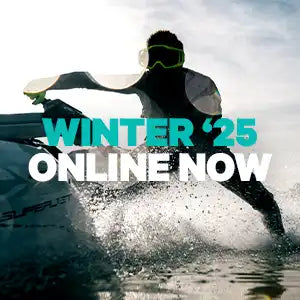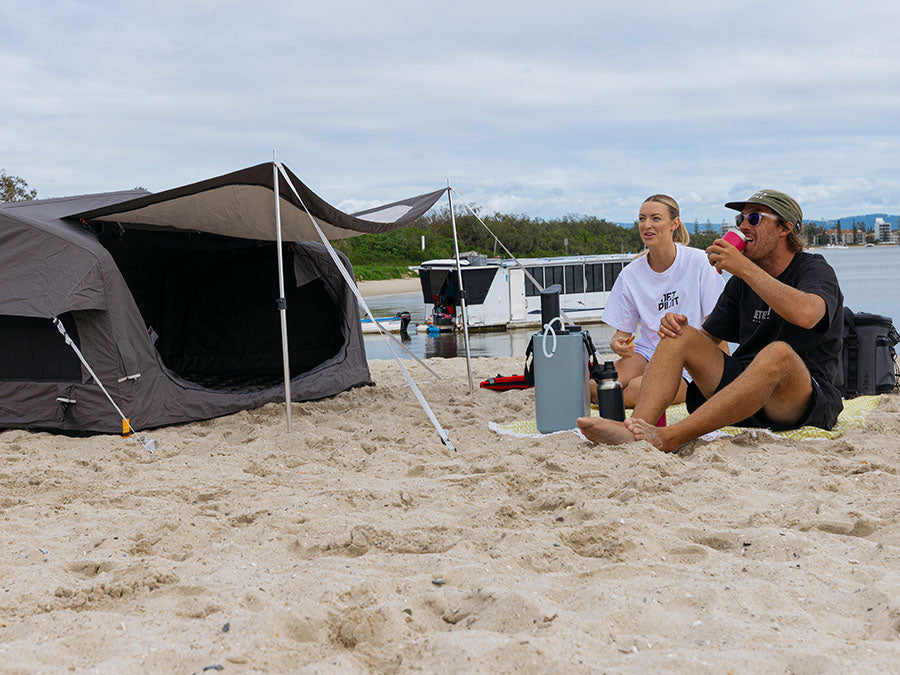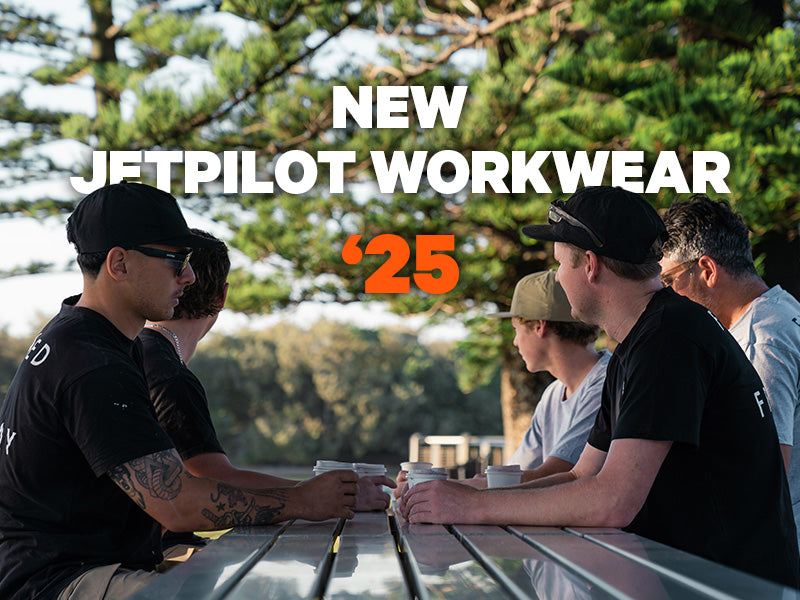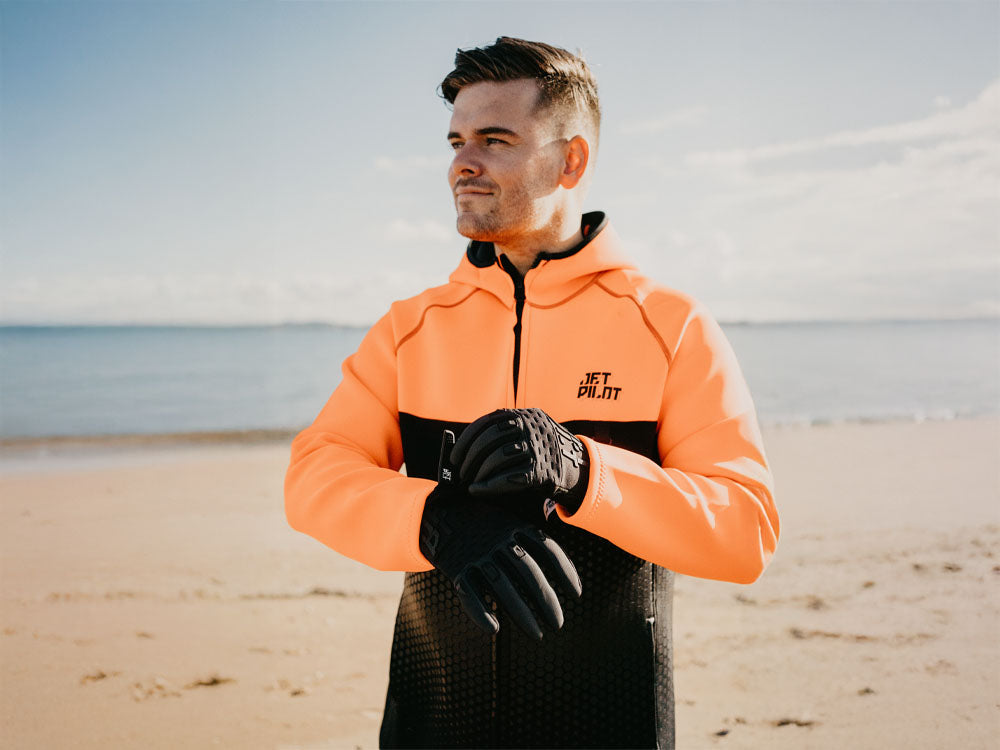There’s something special about waking up to the sound of waves, a fresh breeze coming off the ocean, and the smell of salt in the air. Beach camping hits different—whether you’re fishing, jetskiing, spending time with the family, or just kicking back under the stars with your mates and a few cold ones at a well-equipped campground with all the necessary amenities. But let’s be real: without the right gear, beach camping can go from epic to frustrating fast.
That’s where this guide comes in. We’ve broken down everything you need for a comfortable, safe, and memorable coastal camping trip. From practical must-haves to the gear that levels up your whole setup, this is the no-fluff checklist for making the most of your next beach mission.
Your Beach Base: Shelter and Sleep
 Picking the Perfect Tent
Picking the Perfect Tent
Let’s face it—choosing the right tent can make or break your beach tent camping trip. You’re not just dealing with the usual outdoorsy stuff like mozzies and the occasional rain. You’re contending with sand that gets into everything, gusty winds straight off the ocean, unrelenting sun, and the kind of salt air that seems to corrode anything it touches. That means your standard tent from the back of the shed probably won’t cut it.
Enter the Dometic PICO 2-Person Inflatable Camping Swag. This isn’t your average setup. It’s built for Aussie conditions and designed with ease in mind. There’s no fumbling around or trying to figure out which end is the front as the sun sets. Just pump it up, peg it down, and you’ve got a sturdy, weather-resistant shelter ready in minutes.
The beauty of an inflatable swag like this one is in the details. It’s compact enough to throw in the back of your ute but tough enough to hold its own against strong winds and shifting sand. It’s got mesh windows to keep the air flowing without letting in the bugs, and the base is made to handle everything from wet ground to rocky patches. And when it’s time to pack up? Deflate it, roll it, and you’re on your way.
Many beach campgrounds are situated in areas with strong winds and shifting sands, making a sturdy tent essential.
This kind of simplicity is golden when you’re juggling kids, gear, or just trying to sneak in an early fish before sunrise. Plus, you’ll appreciate how well it holds up after a few weekends on the coast—no sagging frames, no stuck zippers, just solid performance.
If you’re camping with a mate, it’s a tight but doable fit. If you’re flying solo or just like to spread out, it’s spot on. For beach camping, where space and time are at a premium, this tent brings serious value. And it looks the part too—clean, practical, and built to last.
So if you’re planning a beachside escape and want to avoid the classic “half your day spent setting up camp” scenario, the Dometic PICO makes a strong case for being your go-to shelter. It ticks all the right boxes for Aussie adventurers: easy setup, rugged build, and comfort that doesn’t compromise.

Sleeping Like a Legend
Let’s be honest—there’s nothing worse than waking up stiff, sore, and sleep-deprived when you’re meant to be enjoying your time off. Beach camping might bring the breeze and views, but if you don’t sort your sleep setup, you’ll feel it the next day. The good news? It’s easier than ever to sleep like a legend under the stars—you just need to bring the right gear. Many beach campgrounds offer a variety of setups, including caravan sites, to ensure you have the best sleeping arrangements.
Start with your mattress. Leave the old-school foam mats or thin yoga pads behind. A solid inflatable mattress is a total game changer. It gets you off the ground, smooths out those uneven beach spots, and provides legit comfort even after long days in the sun. Plus, most modern inflatable mattresses pack down small and come with their own pump—so setup is fast and painless. If you’re traveling in a motorhome, ensure your mattress fits well within the space to maximize comfort.
Next up: the sleeping bag. Not all sleeping bags are made equal. If you’re camping in warmer regions or heading out in summer, go for a bag with good breathability and a temperature rating that won’t have you waking up in a sweat. For cooler months or windier coastlines, invest in a high-quality, insulated bag to keep the chill at bay. A thermal sleeping bag liner is worth tossing in the kit—it adds extra warmth on colder nights without the bulk of doubling up.

Now, don’t skimp on your pillow. Sure, you could ball up a hoodie, but a compact travel pillow or inflatable camping pillow can make a massive difference to your sleep quality. Look for something that supports your neck and packs away easily. You’ll feel the payoff every morning.
For those muggy nights where a sleeping bag is too much but the breeze isn’t quite enough, pack a lightweight cotton blanket. It’ll keep you just warm enough without that sticky feeling you get from synthetic materials. And if the forecast calls for colder temps? Layer up with your thermal liner or bring a flannel blanket to throw over your bag.
Don’t forget airflow—your tent or swag should have solid ventilation. Nothing kills sleep quicker than a hot, stuffy setup. Crack a mesh window, use a fan if you’ve got power, and position your sleeping area to catch the sea breeze.
Finally, set up your sleeping space with some thought. Use a small camp light or lantern nearby, keep your water bottle within reach, and have your phone or watch nearby if you’re using an alarm to catch the early tide. A little prep goes a long way to creating a sleep zone that feels more like a retreat than a rough night in the bush.
Dial in your sleeping setup and you’ll do more than just crash—you’ll actually recover. That means more energy for morning surfs, afternoon fishing, late-night yarns, and everything in between. Because when the rest of the trip is about relaxing, exploring, and enjoying the beach, your sleep shouldn’t be the part you dread.
So skip the stiff back and cranky mornings. Bring the good gear, and sleep like you mean it.
Set Up Some Shade
Shade is one of those things you don’t think much about—until you don’t have any. And when you’re out beach camping, exposed to the full brunt of the Aussie sun, you’ll quickly realise just how essential it is. A simple canopy or beach tarp isn’t just a luxury; it’s a key part of your camp setup that makes life easier, cooler, and a lot more comfortable.
A well-planned camping area with adequate shade can make your beach camping experience much more enjoyable.
Start with the basics: you need something that’s quick to put up, easy to pack down, and strong enough to handle coastal breezes. Look for a canopy or tarp with UV protection, adjustable legs, and sandbags or guy lines to secure it properly. Even a budget pop-up gazebo can make a world of difference if set up right.

Once you’ve got it up, your canopy becomes the social hub of your site. It’s the place where you prep meals, kick back in a camp chair, play cards with the crew, or simply escape the midday glare. If the weather turns, it’ll also keep your gear dry and give you cover to ride out a passing shower.
Think about the layout too. Set it up close to your tent for convenience, but far enough away so you’re not tripping over ropes. If you’ve got a view, face your chill zone toward it—it turns your basic shade setup into a beach-front lounge.
Pro tip: add a ground mat underneath to reduce sand transfer into your sleeping and cooking areas. Hang a light or lantern from the frame and you’ve got an evening hangout that’s easily accessible and beats sitting in the dark swatting mozzies.
At the end of the day, your shade setup is the difference between a campsite and a proper beach base. Don’t underestimate it.
Stay Safe and Sorted on the Water
Life Jackets Aren't Optional
When you’re out on the water—whether it’s fishing off the tinny, exploring hidden coves on the jetski, or just floating around for a swim—safety should never be an afterthought. Whether you’re fishing off the tinny, exploring hidden coves on the jetski, or kayaking along the coast, safety should never be an afterthought. The ocean’s unpredictable. Conditions can change in minutes, and if you’re not prepared, it can turn serious quickly.

That’s why wearing a life jacket isn’t just smart—it’s essential. The Jetpilot Venture Life Jacket is a top choice for anyone who wants protection without sacrificing comfort or mobility. It’s lightweight, L50S approved, and designed for all-day wear, whether you’re hauling in snapper, jumping wakes, or towing the kids on a tube. The ergonomic fit means you’re not constantly adjusting or overheating, and the clean-cut style makes it something you’ll actually want to wear. The Jetpilot Venture Life Jacket is also perfect for snorkelling, providing buoyancy and safety while you explore underwater.
This isn’t about being overcautious—it’s about having peace of mind. And when you’re leading the way for your family or mates, setting the example matters. Accidents don’t wait for warnings.
Lock It Down: Anchoring Made Easy
Getting out on the water is the easy part—staying put is where people slip up. A good anchor setup is vital, especially if you’re pulling up for lunch, diving off the back, or fishing close to shore. Anchoring is especially important when you’re exploring secluded bays and coves. The Jetpilot Plough Anchor is made to grip sandy or muddy seabeds, ensuring your craft stays situated while you’re off enjoying the day.
Extra Water Safety Must-Haves
Beyond the basics, having a few key backup items on board is always smart. Waterproof dry bags will protect your valuables. A UHF radio or waterproof phone case keeps you in touch in case of emergency. Toss in a whistle and a small flare kit if you’re venturing far from shore. And always bring a first aid kit—you never know when a rogue fish hook or slippery deck might catch you out.
Having a well-prepared safety kit is crucial, whether you’re at a remote campground or a popular beach spot.
By getting your safety kit dialled in before you even leave the shore, you’re not only protecting yourself, but you’re also ensuring that your campsite is situated for a safe and enjoyable experience. It doesn’t take much to stay safe, but it takes everything if you’re not ready.

Apparel for Beach Comfort and Sun Protection
Sun Protection Must-Haves
Spending long days by the ocean is one of life’s great pleasures—but anyone who’s copped a full day of sun without proper protection knows how quickly it can turn. The Aussie sun is no joke, and when you’re camped by the coast, you’re exposed to more than just heat. The reflection off the water and sand doubles down on UV exposure, making sun protection absolutely essential. Beach campgrounds often have limited shade, making sun protection absolutely essential.
That’s where smart apparel comes in, and Jetpilot delivers the goods. The Jetpilot Venture LS Sun Shirt and Jetpilot Venture LS Fishing Polo are must-haves in your pack. Both are built for the outdoors: lightweight, breathable, and packed with UPF protection. You get coverage without overheating—ideal for anyone situated at a beach campground, whether you're casting a line or lounging in the sun.

Layers That Work With You
Let’s talk versatility. Coastal camping means dealing with a full range of conditions. Mornings can be crisp, mid-days are scorching, and evenings can cool off quickly. That’s why you want gear that adapts. Whether you’re at a remote campground or a popular beach spot, having versatile clothing is key.
Jetpilot’s Quilted Flannel Jacket bridges the gap between rugged and comfortable. It’s warm enough for cooler nights, breathable enough not to feel bulky, and tough enough to wear day after day. Whether you’re standing by the fire or doing a hardware run into town mid-trip, it won’t let you down, no matter where your campground is situated.
Shorts Made for Action
A quality pair of shorts goes a long way when you’re going from beach to boat to bushwalk. The Jetpilot Jet-Lite Utility Shorts are purpose-built with quick-dry fabric, reinforced seams, and enough pockets to stash everything from lures to sunnies. The Jetpilot Jet-Lite Utility Shorts are perfect for everything from beach activities to bushwalking. They’re comfortable, durable, and look sharp enough for a post-camp pub stop, no matter where your campground is situated.
Hats, Sunnies and the Rest
Don’t forget your accessories. A wide-brim hat or cap, polarised sunglasses, and a neck gaiter or buff can all make a big difference in keeping you cool and protected at any campground. And whatever you do—don’t skimp on sunscreen. Reapply often, especially after hitting the water.
When you’ve got the right gear, your clothing becomes part of your setup—just as essential as your swag or stove. It lets you stay out longer, enjoy more, and come home without the sunburn and regrets. Dress for the conditions and you’ll be ready for whatever the beach throws your way, no matter where your campground is situated.

Beach Footwear
Your feet do a lot more than you think on a beach trip. From the minute you step out of the car to setting up camp at your chosen campground, the right footwear matters. Trekking across hot sand, launching the jetski, or going for a fish, the right footwear matters. Water shoes are perfect during the day—they let your feet breathe and handle getting wet without staying soggy. Come nightfall, when temperatures drop and the fire gets going, you’ll want something warmer—like camp shoes or insulated slip-ons. Protect your feet from heat, sharp shells, and stubbed toes, and they’ll thank you every step of the way. Dress for the conditions and you’ll be ready for whatever the beach throws your way, no matter where your campground is situated.
Staying Hydrated and Fed
Fresh Drinking Water on Demand
Let’s face it—when you’re camping in the sun, salt, and sand, staying hydrated is non-negotiable. Dehydration can sneak up on you, especially if you’re active—swimming, fishing, walking, or just soaking up rays. That’s why having a reliable water source on hand is essential. Having a reliable water source is essential, whether you’re at a remote campground or a popular beach spot.
The Dometic GO Hydration 11L Water Jug and GO Hydration Water Faucet are a solid combo that makes access to clean, fresh water super simple, no matter where your campground is situated. The jug holds enough water for you and your crew, while the faucet gives you running water at camp—perfect for drinking, cooking, or washing up. It’s an upgrade that’ll make your setup feel that little bit more like home.
Perfectly Chilled or Hot Beverages
There’s something magic about a hot cuppa at sunrise or a chilled bevvy after a long day in the sun. The Dometic 900ml Thermo Bottle keeps your coffee piping hot for hours, while the 320ml Tumbler is spot-on for sipping cold ones beachside. They’re both rugged, easy to clean, and designed to perform—no cheap plastic or mystery leaks here.

Whether you’re at a remote campground or a popular beach spot, having reliable drinkware is crucial. Having reliable drinkware not only keeps your fluids at the right temp but cuts down on waste and pack space, too. It’s the kind of gear that earns its spot every trip, no matter where your campground is situated.
Camp Cooking Essentials
You don’t need a full kitchen to eat well on the beach. A basic setup—portable gas stove, decent pan, and a few utensils—will get you far, whether you’re at a remote campground or a popular beach spot. Keep meals simple, hearty, and easy to prep. Think wraps, BBQ packs, one-pan brekkies, and anything you can cook on the grill. Tinned beans, pre-cut veg, and marinated meat are your best mates when it comes to fast, fuss-free feeds.
Don’t forget the esky or cooler—especially if you’re bringing meat, dairy, or cold drinks. Ice blocks or frozen water bottles can keep things chilled for days if you pack them right.
Lastly, make sure your cleanup is sorted. Bring dish soap, a cloth or scrubber, and a small tub to wash up in. Rinse off the gear with your Dometic faucet, hang it to dry, and you’re good to go again the next day.
From water and drinks to food and cooking, getting your hydration and meals dialled in means more time enjoying the beach and less time stressing about supplies, no matter where your campground is situated. It’s about keeping it simple, practical, and satisfying—because good food and cold drinks are what great beach camping memories are made of.
Setting Up Camp Like a Pro
Choosing the Right Spot
A good beach campsite starts with smart positioning. Always aim to pitch your tent or swag above the high tide line—because nothing ruins a morning like waking up in a puddle. Whether you’re at a remote campground or a popular beach spot, look for a spot that offers natural wind protection, like behind a dune or a patch of coastal scrub. If the beach is exposed, consider bringing a windbreak to help shelter your gear and give you a more comfortable base.
Try to orient your camp to take advantage of the breeze without getting sandblasted. Keep the tent doors facing away from the wind to avoid flapping and the unwanted sandstorm effect. And make sure your setup doesn’t block any pathways or vehicle access if you’re in a designated beach camping zone, ensuring your campsite is well-situated.
Lock Everything Down
Sand makes pegging down gear a little different. Standard tent pegs won’t do the job—go for sand pegs or screw-in stakes that can grip the soft surface properly. Use guy ropes to add extra tension and stability, especially if you’re setting up close to the shoreline where gusts can pick up quickly.
Whether you’re at a remote campground or a popular beach spot, securing your gear is crucial. Got a shade tarp or gazebo? Reinforce it with sandbags or buried anchor points. Use ropes and carabiners to secure it to nearby trees if available (without damaging them), ensuring your setup is well-situated. A flapping tarp or collapsed canopy is a quick way to turn your setup into a headache.

Make It Functional
Layout matters. Set up your sleeping area in a quiet corner, cooking zone downwind, and leave a central area open for gear, chairs, and relaxing. Keeping things organised makes your whole stay smoother and more enjoyable. Layout matters, whether you’re at a remote campground or a popular beach spot.
Use ground mats or rugs to create clean zones—these help keep sand out of your sleeping bag and give you somewhere to sit or cook without getting covered in grit. Bonus points for bringing a folding table and stackable storage bins to keep everything tidy, ensuring your campsite is well-situated.
Respecting the Environment
Beach camping comes with a responsibility to look after the place. Stick to marked sites where possible and always pack out what you pack in. Bring plenty of rubbish bags and separate your waste—don’t bury food scraps or burn plastics.
Beach camping comes with a responsibility to look after the place, whether you’re at a remote campground or a popular beach spot.
Avoid trampling dunes or disturbing local wildlife. Use biodegradable soaps and detergents when washing up, and dispose of grey water away from the ocean or creek lines. If nature calls and there are no facilities, dig a hole at least 15–20cm deep and 100 metres from water, trails, or camp.
Leave your campsite cleaner than you found it, ensuring it’s well-situated for the next group to enjoy. It’s basic bush etiquette—and it means the next group can enjoy the same pristine views and clean space that you did.
Win Big with Jetpilot and Dometic
Ready to level up your camping game? Don’t miss your chance to enter the Jetpilot x Dometic Giveaway—but be quick, it ends 7th May 2025. One lucky winner will score a premium prize pack stacked with the best in outdoor gear from two iconic Aussie brands. Whether you’re chasing fish, launching the ski, or soaking up the sun with family at a well-situated campground, this kit has everything you need to camp smarter, ride harder, and stay out longer. Enter now, and you could be gearing up for your next adventure in serious style, no matter where your campground is situated.










